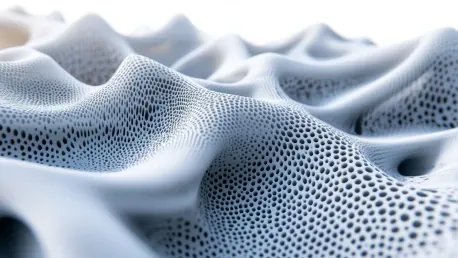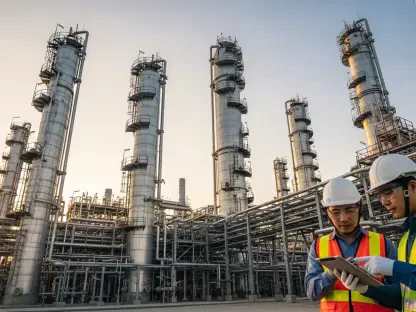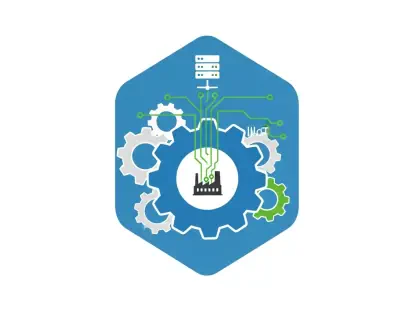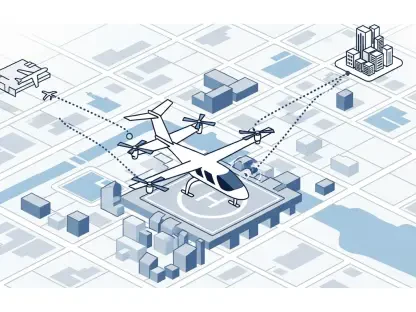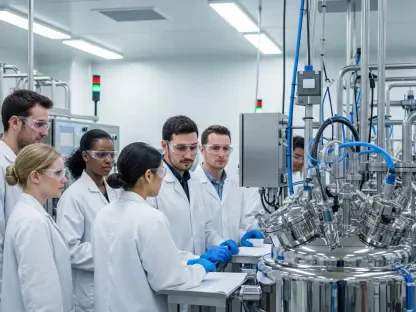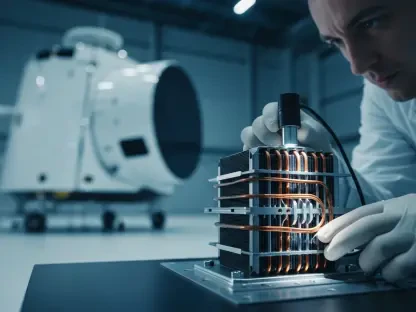The year 2024 has been a landmark for the Additive Manufacturing (AM) industry, with significant technological advancements and trends shaping its evolution. This article explores how AM is transforming various industries, highlighting key developments and their implications.
The Surge in Large Format Additive Manufacturing
Expanding Building Envelopes
One of the most notable trends in 2024 is the increased demand for large-format 3D printers. Companies like AMCM GmbH have pushed the boundaries by creating the largest 3D-printed parts showcased at Formnext 2024. These massive printers are changing the landscape for OEMs, enabling the manufacture of bigger parts in a single print run. This shift is becoming more commonplace across various AM processes, including composites 3D printing, LPBF, WAAM, polymer 3D printing, and VAT photopolymerization. The ability to handle large building envelopes is propelling the industry forward, offering new possibilities in manufacturing efficiency and complexity.
Technological Advancements Driving Innovation
Technological advancements in one stage of manufacturing often drive innovation across the entire chain. A perfect example is Solukon’s development of the SFM-AT1000-S depowdering system, which highlights how improvements in post-processing can significantly enhance the overall efficiency and capabilities of large-format AM. This interconnected innovation is crucial for the industry’s growth, as each stage of development feeds into the next, creating a cycle of continuous improvement. With each technological leap, manufacturers can achieve higher precision, reduced waste, and increased productivity, making large-format additive manufacturing a powerful tool in the production arsenal.
Customization and Profitability
The Ongoing Debate
Customization continues to be a priority for manufacturers, despite ongoing debates about its profitability. While there have been incredible customized applications created through AM, their association with profitability often falls short unless they are linked with series manufacturing. This section explores the balance between customization and profitability within the AM industry. Companies are pushing the envelope with personalized products and bespoke designs, yet the challenge remains in turning these customized efforts into financially viable solutions. The ongoing discussion centers around whether the unique value offered by customization can outweigh the higher costs and logistical challenges it often entails.
Series Manufacturing as a Solution
Manufacturers who have managed to generate profit from AM often provide series manufacturing services. This approach allows for the benefits of customization while maintaining the economies of scale necessary for profitability. As manufacturers pursue series production, they can leverage the flexibility and precision of AM to create small batch runs of customized products that can still turn a profit. By combining the personalized touch of custom products with the efficiency and cost-effectiveness of series production, companies can offer tailored solutions without sacrificing financial stability. This strategic direction underscores the industry’s need to balance innovation with practical business models that ensure sustainable growth.
AM in Semiconductors and Defense
Addressing Industry Challenges
The semiconductor and defense industries have witnessed significant growth in the use of AM technologies. These sectors face unique challenges, such as global production capacity stresses, long lead times, and supply-demand imbalances that can be effectively addressed by innovative AM solutions. VAT photopolymerization and LPBF processes are particularly valuable in these industries, delivering bespoke parts with high precision and shorter turnaround times. The flexibility and adaptability of AM make it an ideal fit for the complex and often critical requirements of semiconductor and defense applications, driving further adoption and investment in these areas.
Investment and Adoption
The defense sector, both in Europe and the USA, continues to invest heavily in AM, recognizing its potential to provide bespoke and efficient solutions. Various events and initiatives have highlighted the increased adoption of AM technologies, showcasing their benefits in producing complex parts, reducing lead times, and enhancing operational efficiency. In the semiconductor industry, AM solutions are being implemented to address the rapid pace of technological advancement and the need for highly specialized components. As both sectors continue to embrace AM, the technology’s role in meeting high-stakes demands becomes ever more apparent, solidifying its place as a critical tool in their operational strategies.
Dominance of Material Extrusion
Leading 3D Printer Launches
Material extrusion has emerged as the most prominent category for 3D printer launches in 2024. This section examines the various launches and the unique terminologies introduced by manufacturers, emphasizing the need for a standardized language framework within the industry. The diversity in machine capabilities and terminologies can be overwhelming, necessitating a common glossary to streamline communication and understanding across the sector. As new materials and techniques are introduced, having a cohesive language will foster collaboration and innovation, ensuring that technological advancements are comprehensible and accessible to all stakeholders.
Notable Innovations
Companies like Rosotics, with their Halo “supercreator,” Fugo Precision 3D with centrifugal 3D printing, and ADDiTEC with hybrid machines, have introduced intriguing new AM processes. These innovations highlight the dynamic nature of the material extrusion segment and its impact on the industry. Each of these companies is pioneering unique methods that push the boundaries of what material extrusion can achieve, from enhanced structural integrity to greater flexibility in design. These novel processes are not just incremental improvements but represent significant leaps forward in AM capabilities, promising to redefine the possibilities for manufacturing applications.
Rise of Entry-Level 3D Printers
Meeting Industrial Demands
Entry-level 3D printers have increasingly proven their capability to meet industrial demands. Data from CONTEXT reveals significant growth in shipments of low-end entry-level printers priced under $2,500, with Creality and Bambu Lab leading the market. This rise in affordability allows more businesses and individuals to access advanced printing technologies previously confined to higher-end models. As these entry-level 3D printers demonstrate their utility in various industrial applications, they are lowering the barrier to entry, enabling broader adoption and fostering innovation across different sectors.
Accessibility and Growth
The robust growth in the entry-level segment showcases the potential for ordinary consumers to gain access to industrial-grade technology at a lower cost. This democratization of technology is a significant development in the AM industry, opening up new opportunities for creativity and application. As more consumers and small businesses acquire these powerful yet affordable tools, the landscape of manufacturing is set to change dramatically. The increased accessibility to 3D printing technology has the potential to spur a surge in new products and ideas, driven by a diverse and engaged user base eager to explore the capabilities of their new equipment.
Fragmented AM Software Landscape
The Need for a Common Framework
The software landscape in AM remains fragmented, with a growing number of AI-powered solutions entering the market. This section discusses the need for a common framework or platform to unify the varied software solutions and optimize manufacturing effectively. As the range of software options expands, the lack of standardization can lead to inefficiencies and integration challenges. Establishing a common framework would streamline operations, reduce the learning curve for new users, and enhance the interoperability of different systems, ultimately driving productivity and innovation across the industry.
Enhancing Manufacturing Efficiency
AI-powered solutions show great potential but come with the caveat that product designers should not overlook their creative capabilities. The common aim across this fragmented landscape is to enhance manufacturing, reduce failed builds, and improve reliability. This section delves into the specific advancements and their implications, highlighting how AI can optimize production workflows, foresee potential issues, and suggest design improvements. By leveraging the power of artificial intelligence, the AM industry can push the boundaries of efficiency and accuracy, ensuring that each print is cost-effective and meets the highest standards of quality.
Process Monitoring and Defect Identification
Advancements in Defect Identification
Advancements in defect identification are among the most significant benefits for the AM industry. Detecting and preventing defects before they occur can improve surface quality and mechanical properties, leading to material savings and enhanced machine capabilities. This proactive approach to quality control ensures that prints meet stringent requirements and reduces the need for costly rework or scrapping. Innovations in sensor technology and real-time monitoring systems are key to this advancement, enabling more precise control over the manufacturing process and providing valuable data for continuous improvement.
Enhancing Reliability and Efficiency
Solutions like those from Johns Hopkins APL, which use sensors to identify defects, are critical to enhancing the reliability and efficiency of AM processes, particularly in metal 3D printing. This section explores the specific technologies and their impact on the industry, demonstrating how real-time defect detection can transform production workflows. By incorporating advanced monitoring systems, manufacturers can achieve higher consistency in their outputs, reduce downtime, and extend the lifespan of their equipment. These improvements translate to significant cost savings and greater confidence in the durability and performance of AM-produced parts.
Combining Multiple Manufacturing Processes
Synergy of AM Processes
An intriguing development in 2024 has been the combination of different AM processes within the same part. This approach can potentially lead to locally optimized material properties tailored for specific functions, which can be highly beneficial for specialized applications. For instance, combining material extrusion with powder bed fusion can create parts that leverage the strengths of both methods, resulting in enhanced durability and performance where needed. This synergy between multiple AM processes opens up new possibilities for product design and functionality, pushing the boundaries of what can be achieved with additive manufacturing.
Exploring New Possibilities
While combining multiple AM processes is typically seen in series manufacturing, its exploration within single parts is gaining traction. This section delves into the innovative approaches being taken to integrate various processes, highlighting the advantages and challenges associated with this trend. The ability to customize material properties at a micro level within a single part can lead to groundbreaking advancements in fields such as aerospace, automotive, and medical devices. By harnessing the combined strengths of different AM techniques, manufacturers can produce more complex, high-performance components that meet evolving industry demands.
Conclusion
The year 2024 has marked a watershed moment for the Additive Manufacturing (AM) industry, with groundbreaking technological advancements and emerging trends defining its growth. This article examines how AM is revolutionizing various sectors by spotlighting crucial developments and their broader implications.
Notably, AM technology has broadened the scope of innovation in fields such as aerospace, automotive, healthcare, and consumer goods. In aerospace, lighter but stronger components are being produced, significantly improving fuel efficiency and reducing costs. The automotive industry benefits similarly, utilizing AM to create complex parts that were previously impossible to manufacture through traditional methods.
In healthcare, AM has made strides in custom prosthetics and implants, tailored to individual patient needs, enhancing recovery times and improving overall quality of life for patients. Consumer goods have also seen a transformation, with personalized products and rapid prototyping speeding up design and production cycles.
What sets 2024 apart is the integration of artificial intelligence and machine learning with AM processes, enabling smarter design and optimization techniques. This fusion is driving higher production efficiencies and greater precision, further embedding AM into mainstream manufacturing.
Overall, 2024 has solidified itself as a pivotal year for Additive Manufacturing, setting the stage for even more transformative innovations across various industries.
